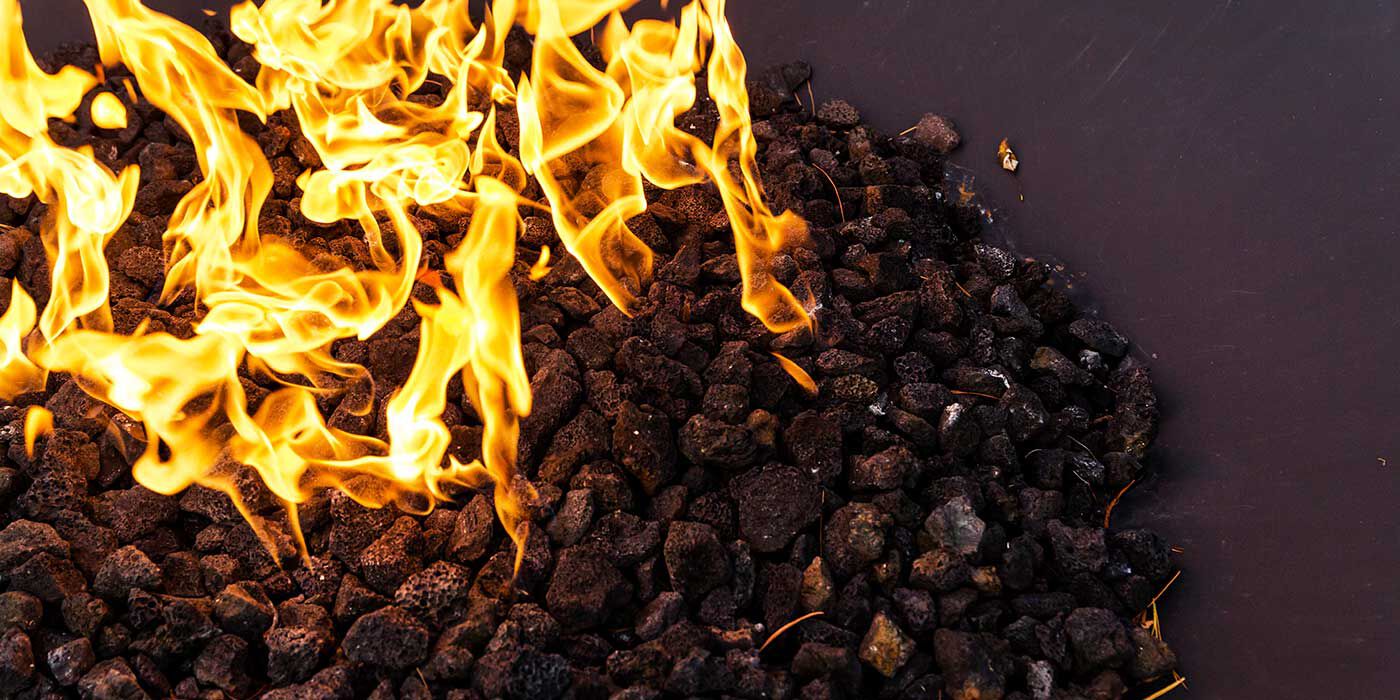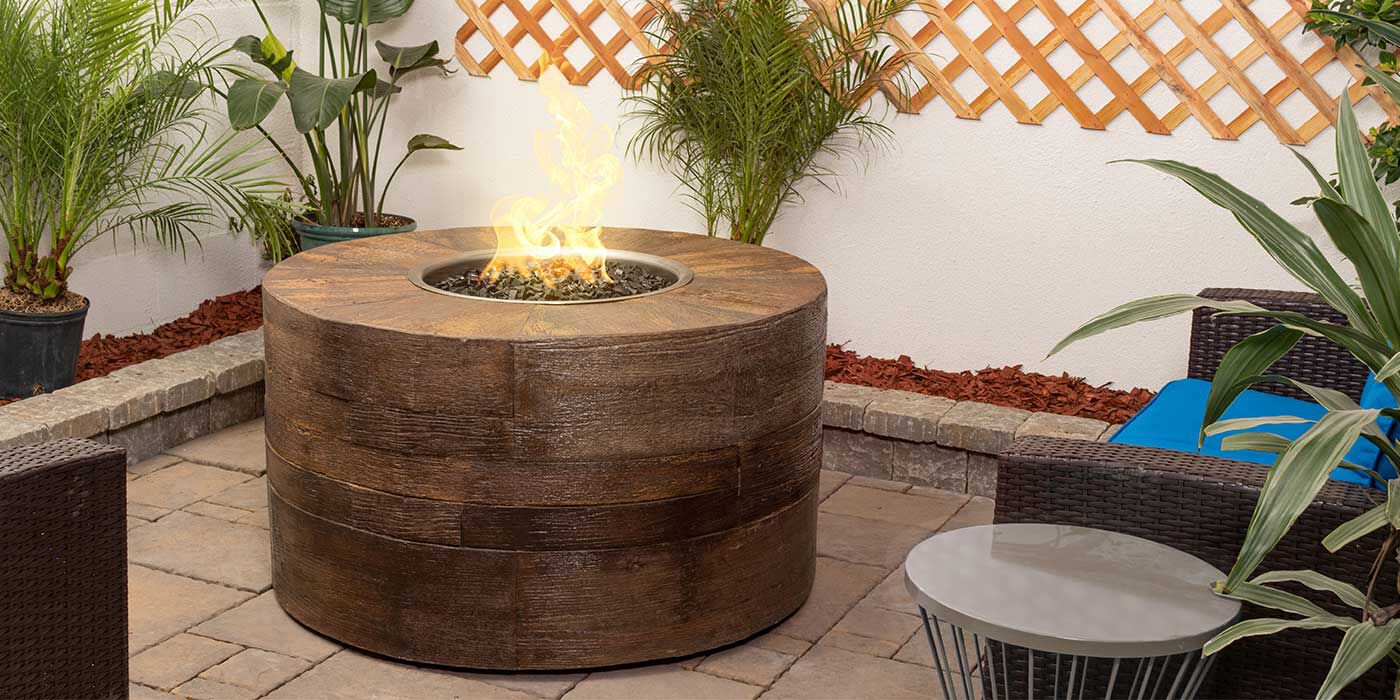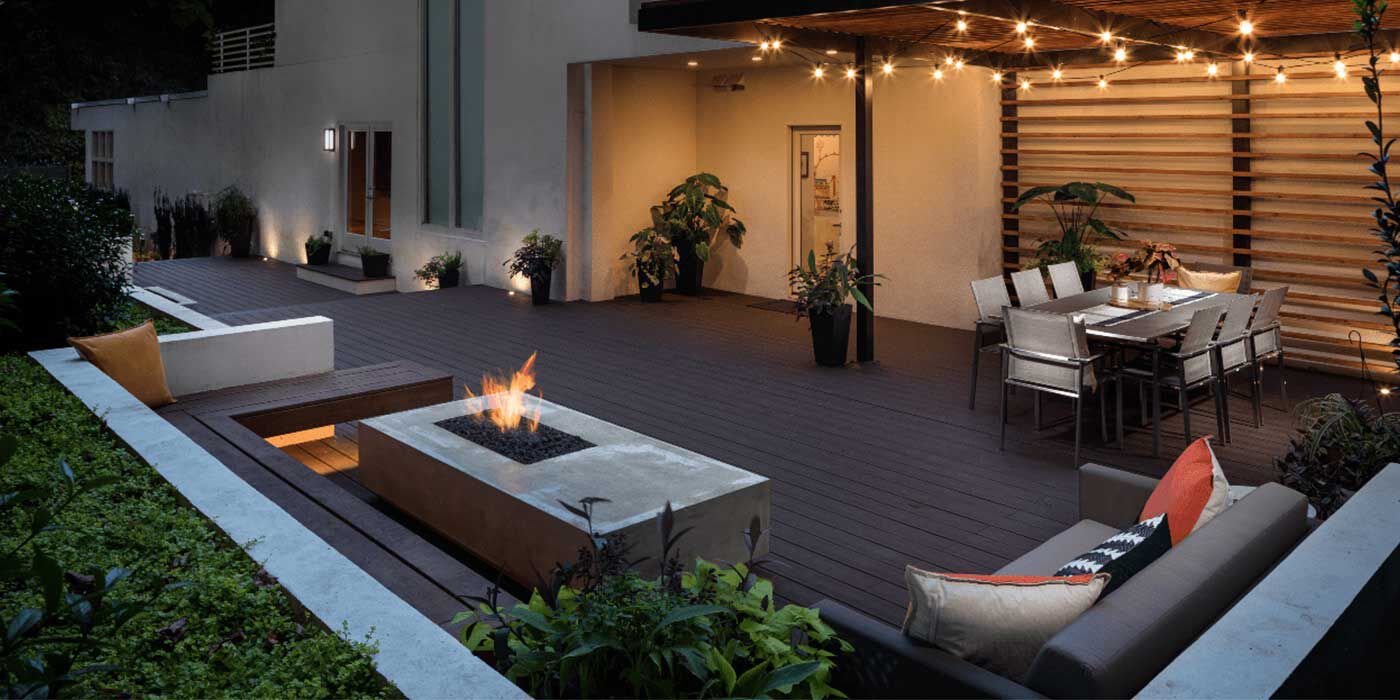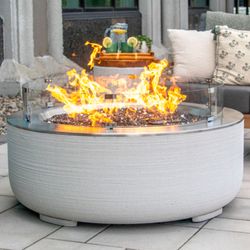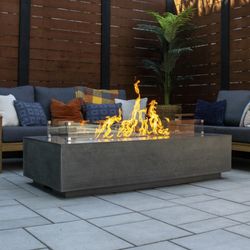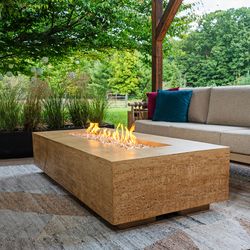By: Thomas Kearney, NFI Certified Master Hearth Professional
Last Updated: July 24, 2025
Gas fire pits make incredible focal points for any outdoor living space. They’re easy to use, clean-burning, and require much less maintenance than wood burning fire pits.
Before you can shop for your outdoor fire pit, you’ll first need to decide what kind of fuel you want to use. Gas fire pits work with two different fuel types — Natural Gas and Propane. The best option largely depends on your space and lifestyle. For example, do you need your fire pit to be portable? Are you looking for massive flames and intense heat?
In this article, we’ll cover the benefits of both Natural Gas and Propane fire pits, so you can confidently choose the best option.
Propane
Pros
🔥Portability - Since they’re hooked up to a tank, Propane fire pits are easy to move, offering more flexibility with placement.
🔥No sparks & minimal smoke - Propane fire pits don’t produce any smoke, sparks, or ash. They’re safe to use and easy to maintain.
🔥Hassle-free DIY installation - No need for professional installation! Simply connect a Propane tank to your fire pit and you’re ready to relax.
Cons
❌ Tank refills - You will need to monitor your fuel supply and replace or refill Propane tanks regularly.
❌ Higher fuel cost - Liquid Propane is generally more expensive per unit than Natural Gas.
❌ Storage concerns - Propane tanks take up space and need proper storage for safety.
Why Buy a Propane Fire Pit?
Propane fire pits are very easy to use and require minimal installation. You can simply hook up a Propane tank to the fire pit, check for gas leaks, then turn it on.
Most Propane tanks are small and portable, meaning you can move your fire pit from place to place.
If you have a large Propane tank on-site, you can run a gas line underground that connects to the fire pit, to make it a permanent part of your outdoor living space.
If seeing the Propane tank is a concern for you, not to worry! There are many fire pit styles available that hide the tank from view, like fire pit tables.
Our most popular style is the “hidden tank” fire pit. Hidden tank fire pits house the Propane tank in the base and often have a door on one side, known as an “access door”. This door allows you to easily swap the tank out when it's empty.
Styles that can’t hide a Propane tank underneath require it to be stored outside of the fire pit, usually within 10 feet. In this instance, a matching tank enclosure may be available, such as a side table, to hide the Propane tank from view.
Tank enclosures are a great way to add extra functionality to your space. Not only do they streamline the area and coordinate with your fire pit, but they also provide a place to set drinks and snacks while you relax around the fire.
Natural Gas
Pros
🔥Constant gas supply- Natural Gas fire pits are connected to your home’s gas line, ensuring you never run out of fuel. You won’t need to worry about replacing or refilling Propane tanks.
🔥Cost-effective - Natural Gas is typically cheaper than Propane gas, making it a more budget-friendly option in the long run.
🔥Eco-Friendly - Natural Gas burns cleaner than Propane, creating fewer emissions and reducing your environmental impact.
Cons
❌ Fire pit installation cost - It can be costly to install a Natural Gas line if you don’t already have one. You’ll also need to hire a licensed professional for the job.
❌ Fixed location - Since Natural Gas fire pits require a permanent connection, they cannot be moved once installed.
❌ Limited availability - In some areas, it’s not safe to install a permanent gas line. If you don’t have one in your outdoor space, make sure you consult with a professional before moving forward with your project plans.
Why Buy a Natural Gas Fire Pit?
Natural gas is a great option if you want to add a permanent fire pit to your backyard. However, you will need to have a gas line installed.
If a gas line is not already available on your property, you’ll need to hire a professional to install the line and hook up your fire pit.
This might sound time-consuming, but once the gas is connected, your fire pit will have a constant fuel source. You won't need to refill a Propane tank, saving you time and money. You can simply turn your fire feature on, relax, and never have to worry about the flames going out.
A constant flow of gas also allows you to use more fuel at once. Natural Gas fire pits have higher BTU ratings than Propane models, allowing you to maximize the flames and heat output for next-level ambiance.
Overall, gas fire pits require very little maintenance. You won't have to add kindling to the fire, monitor it while it burns, or make sure it's been properly put out at the end of the night. You also won't have to keep a stack of firewood on hand.
Operating a gas fire pit is incredibly easy, too. With just the flip of a switch or turn of a knob, you can start and stop the fire whenever you'd like. Some gas fire pits also feature modern, remote-controlled ignition systems and the ability to control the fire from your smart device.
You can learn more about your ignition system options here.
Prefer to Listen?
Shop Our Most Popular Gas Fire Pits
We're Here to Help
Do you have more questions for us? Contact one of our NFI Certified specialists at (800) 919-1904 today!
More Resources
Read our top fire pit maintenance & safety tips to keep your fire pit burning for years to come.
Is it safe to use a fire pit under your covered patio? Here's everything you need to know.
Check out this gorgeous customer spotlight to see how fire can enhance your outdoor space.
 |
Tom Kearney has been a Technical Sales Representative at Woodland Direct for over a decade, where he has honed his expertise in gas, wood, and pellet appliances as an NFI-Certified expert. Tom's dedication to customer satisfaction is exemplified by his work with high-profile clients, including assisting SpaceX President Gwynne Shotwell in sourcing five stunning fireplaces for her Texas home. When he's not helping clients find their perfect fireplace, Tom enjoys hitting the golf course, skiing down snowy slopes, and exploring new trails on his bike. Call him or one of our experts in fire at 800.919.1904. |
